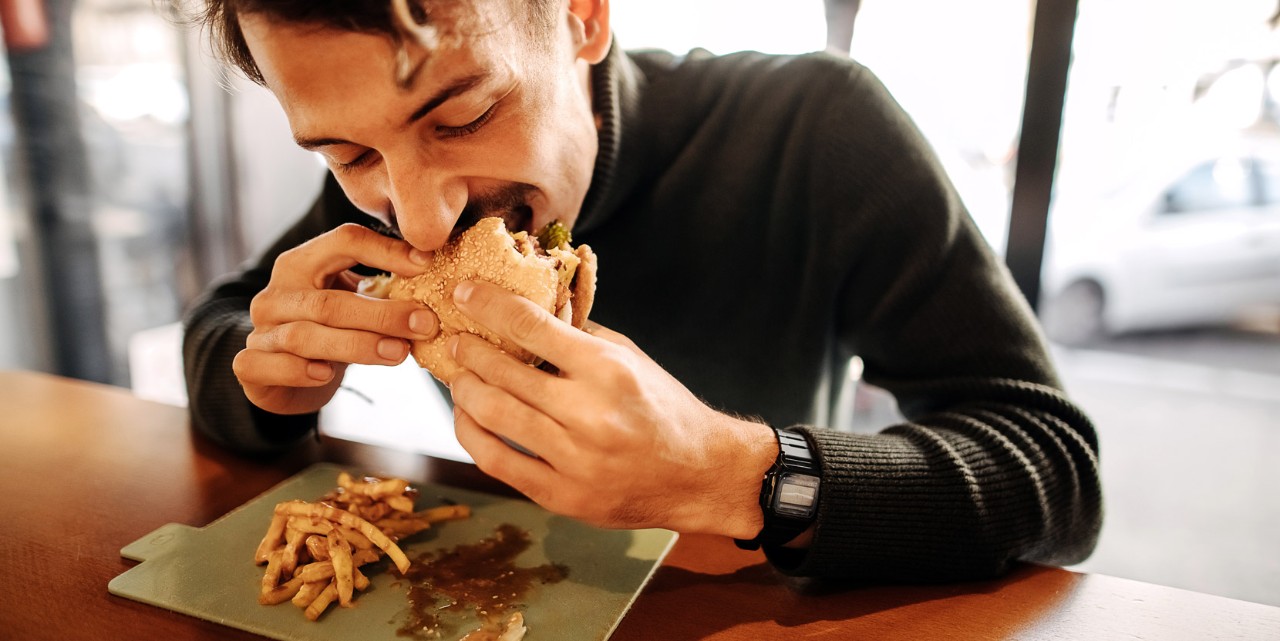Osteoporosis: how to support bone health
In Switzerland alone, around 400,000 people, particularly women, are affected by osteoporosis. How diet and exercise can help.

Over 400,000 people in Switzerland suffer from osteoporosis, and it’s twice as common in women than men. However, many are diagnosed at a very late stage. One of the reasons for this is that the symptoms often only become noticeable when the disease is already well advanced. “Osteoporosis is often only diagnosed when bones break easily,” says physiotherapist Barbara Zindel from Rheumaliga Schweiz.
Video: Osteoporosis explained simply
Main symptom of osteoporosis? Broken bones
Typical fractures due to osteoporosis include fractures of the femoral neck or the radius of the wrist. Fractures can occur with little or no force and may occur after a minor fall. But the vertebral bodies can also be affected. When these break, the result is often chronic back pain that can make daily life difficult.
Height loss and an unsteady gait provide clues
There are other symptoms of osteoporosis besides bone fractures. A significant loss of height is one indication. “Losing 4 cm or more of your height can be a sign of osteoporosis,” warns Zindel. As can a change in posture (stooping or bending forward more). A hunchback, bulging lower abdomen and a hollow back are characteristic changes that often occur when the vertebral bodies collapse due to the disease.
Other symptoms include an unsteady gait or shortening of the trunk. People suffering from osteoporosis sometimes have difficulties walking upright. This in turn can increase the risk of falling and the associated risk of bone fractures.
Main causes of osteoporosis: genes and sex
Osteoporosis occurs when the creation of new bone doesn’t keep up with the loss of old. Our bones are made up of a framework of protein structures that are strengthened with minerals, including calcium phosphate. These minerals make the bones tough and strong. But bones aren’t just static masses – they are changing and evolving constantly.
In a healthy body, two types of cells help make bone tissue: osteoblasts and osteoclasts. Osteoblasts are responsible for growing, shaping and maintaining bones, while osteoclasts dissolve old and damaged bone tissue. Up to the age of 30 or 35, there is usually a balance between the amount of bone that is removed and the amount of bone that is laid down. The skeleton becomes denser and more powerful. From around this age, the ratio changes, with the osteoblasts becoming less active and the osteoclasts starting to outwork the osteoblasts. With osteoporosis, this balance is disturbed. The bone-degrading cells work too fast, while the bone-building cells can no longer keep up. The result: the bone loses density and becomes brittle.
Hormones, weight and alcohol consumption also influence bone density
This change in bone metabolism is influenced by various factors. Hormonal changes play a big role. “Women going through the menopause experience a sharp drop in oestrogen, which accelerates bone loss,” explains Zindel. Early menopause increases the risk of developing osteoporosis. But there are other factors that disturb bone metabolism, such as a vitamin D deficiency.
Some risk factors for osteoporosis, such as smoking and drinking, can be influenced. These have a negative effect on the bone metabolism and can lead to faster bone loss. Being underweight and going through drastic weight loss have a similar effect. “Very thin female smokers are at a very high risk of developing osteoporosis,” says Zindel.
Certain medications can reduce bone mass
However, Zindel says that the biggest risk factor for osteoporosis is genetic disposition. “If osteoporosis runs in the family, the risk of developing the disease yourself is significantly higher,” she says. Certain medicines, such as cortisone, can also have a negative impact on bone metabolism.
“Very thin female smokers are at a very high risk of developing osteoporosis.”
Bone density scan: diagnosing osteoporosis
Osteoporosis is often discovered by chance. For example, when an X-ray is taken for another reason and bone fractures become visible. Sometimes it is also a pathologic fracture that indicates osteoporosis. But there is a procedure that can be used to diagnose osteoporosis specifically: a bone density scan.
This method measures the mineral salt content in the bones by testing how much radiation is transmitted through the bones in the lumbar spine or femoral neck. The more rays pass through, the lower the bone density. The scan takes five to ten minutes and uses lower levels of radiation than conventional X-rays. “Anyone who thinks they have an increased risk of osteoporosis is advised to see a specialist for a bone density scan,” says Barbara Zindel from Rheumaliga. And what’s more, a bone density scan can also be used to detect osteopenia, the precursor of osteoporosis.
Precursor of osteoporosis: osteopenia
Osteopenia is often referred to as a precursor to osteoporosis, because the bone loses strength, but no fractures occur yet. And that’s the problem with osteopenia: it causes next to no symptoms, so it is often diagnosed and treated too late. The good news is that if osteopenia is detected early, bone loss can be slowed and osteoporosis prevented by eating a healthy diet and getting enough exercise.
On its website, the University Hospital Zurich recommends sports such as jogging, dancing or hiking to slow down bone loss. But it’s also a good idea to do targeted endurance and strength training and balance exercises.
Prevent osteoporosis: foods high in calcium are essential
A balanced diet is very important in both preventing and treating osteoporosis. Above all, it is important to get enough calcium. Doctors recommend an intake of between 1,000 and 1,200 mg of calcium a day. Good sources of calcium include dairy products, nuts, seeds, dark green vegetables such as kale and broccoli and calcium-rich mineral waters. Calcium can also be found in soya products and certain fruits, such as berries and kiwis. Rheumaliga Schweiz offers a handy online calculator to check your daily consumption.
Why vitamin D is so important
Vitamin D is needed to absorb calcium. The body can produce vitamin D itself when it is exposed to the sun, but Switzerland does not always get enough sunshine for the body to produce enough vitamin D. Barbara Zindel recommends taking Vitamin D as a supplement, particularly in winter.
Exercise is good for the bones
Regular exercise is also key to preventing and treating osteoporosis. Intensive sport improves muscle strength, balance and coordination. “It is generally recommended that you do at least 150 to 300 minutes of moderate-intensity endurance activities a week, such as walking, cycling, gardening or housework. Or at least 75 to 150 minutes of high-intensity exercise, such as jogging, swimming, cross-country skiing or Zumba,” says Zindel.
“This drug is very effective. But it is important to plan a gradual strategy for coming off the medication with a specialist.”
Osteoporosis treatment: medication is often the best way
Particularly if the bone loss is discovered late or fractures are already present, there’s no getting around taking medication in most cases. Bisphosphonates and an antibody are among the most commonly prescribed drugs, because they prevent bone resorption. These drugs can stop and sometimes even reverse bone loss. In severe cases, there are also medications that have a bone-building effect.
From her many years of counselling experience at Rheumaliga Schweiz, Barbara Zindel knows that many sufferers have reservations about drug treatment: “In particular, the rebound effect after discontinuation of osteoporosis medication with the active ingredient denosumab has caused a lot of uncertainty in recent years,” says Zindel. The expert wants to allay the fears of those affected: “The medication is very effective. But it is important to plan a gradual strategy for coming off the medication with a specialist.”


